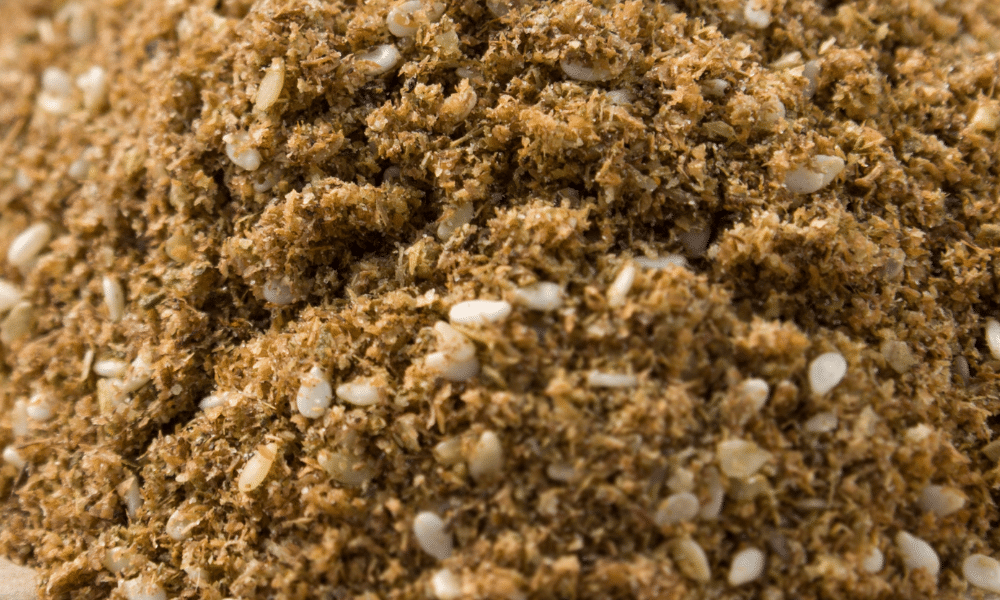Most commonly used in Middle Eastern cooking, sumac is the ground berries of the Rhus Coriaria shrub. In the souks of Africa, you can find whole sumac berries which can then be ground but in Europe, you’re far more likely to find them preground.
But what if you can’t find sumac or it’s too expensive to justify buying? What substitutes for sumac are worth using?
Our 4 Substitutes for Sumac
Below are our 4 top picks for sumac substitutes. Some are a little easier to get hold of than others. We’ve listed them in order of preference:
1) Za’atar
Za’atar is another spice mix from the Middle East and it actually contains sumac. Za’atar is a little easier to come by and can often be cheaper so this makes for a great way to access sumac.
Generally speaking, za’atar is made up of dried herbs (usually oregano and thyme), sumac and toasted sesame seeds.
Use in the Same Quantities
If a recipe calls for 1 tablespoon of sumac then try using 1 tablespoon of za’atar instead. It won’t be quite the same as the original recipe but will still give your dish the same Persian-inspired flavour.

2) Lemon Zest, Salt and Pepper
This is the best sumac substitute to try. Sumac has an iconic tart, sour and peppery flavour so trying to recreate that from one ingredient is going to be near impossible.
By mixing 1 tablespoon each of ground black pepper and lemon zest along with a pinch of salt, you can recreate the flavour profile of sumac without the expense.
Use Dried Lemon Zest
If you are able to use dried lemon zest then this can work even better. Dried zest tends to be more concentrated so the sourness is more prominent.
3) Tamarind
If you happen to have bought tamarind for cooking a curry then you can use it in place of sumac.
Sumac is used both in cooking and as a garnish. If you’re going to use tamarind as a sumac substitute then only use it in your cooking. It won’t work well as a garnish and you’ll be better off opting for lemon zest or za’atar instead.
Use Half the Amount
Tamarind paste can be particularly pungent so using the same quantity of tamarind in place of sumac can be overkill. Instead, use half the amount to avoid overpowering your dish.
4) Lemon Juice or Zest
The key element of sumac that you will want to recreate when finding a suitable substitute is sourness. Sumac brings a sour, tartness to dishes.
The closest normal ingredient that does this is lemon. You can use either lemon juice or lemon zest (depending on the dish) to add sourness to your cooking without needing sumac.
Make a Simple Marinade with Lemon
Try mixing lemon juice, olive oil, salt, pepper and a pinch of dried chilli to marinate meats or vegetables. It won’t be quite the same flavour profile as sumac but it’ll be delicious.

Other Substitutes for Sumac
Below are a few more sumac substitutions you could consider. We would only recommend these 3 if the above 4 aren’t accessible to you:
- Red Wine Vinegar – This should only be used as an emergency. Red wine vinegar is likely to be something you have in the cupboard so it can add sourness to your cooking but it won’t be quite the same as using sumac.
- Amchoor – Amchoor is a dried mango powder used in many Asian dishes, especially Indian ones. It will add bitterness and sourness to your dish in place of sumac.
- Pomegranate Molasses – Pomegranate molasses is another Persian ingredient that can be used in place of sumac. It works great as a marinade ingredient.
Summary
Trying to find worthy substitutes for sumac is challenging. It’s a unique spice that is hard to replicate. However, if there’s no chance of your getting hold of sumac, then the five sumac substitutes above should go some way to recreating the flavour.
The best option is to use lemon zest, black pepper and a pinch of salt. This will bring in multiple layers of flavour much as sumac does.
